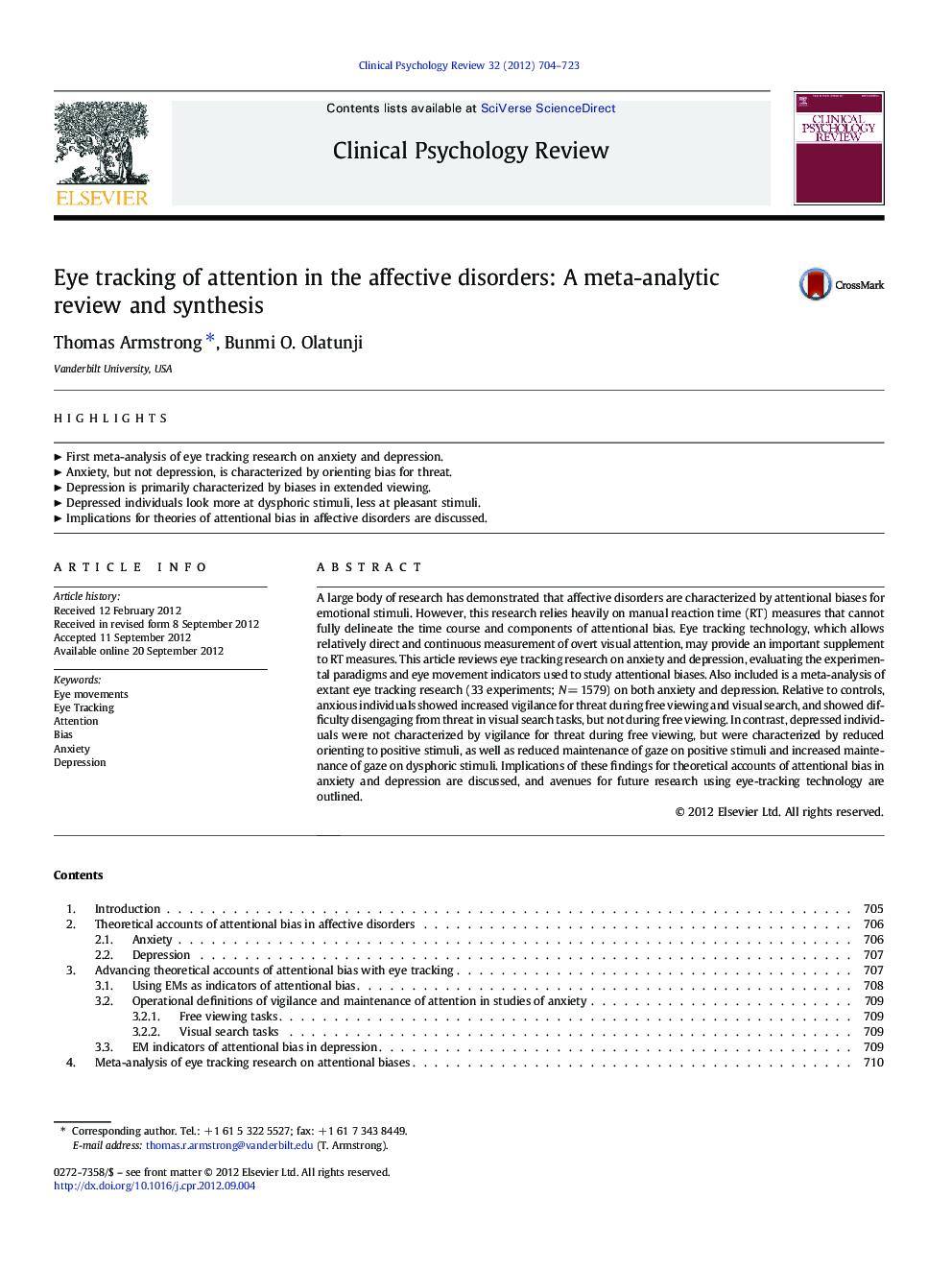| Article ID | Journal | Published Year | Pages | File Type |
|---|---|---|---|---|
| 903787 | Clinical Psychology Review | 2012 | 20 Pages |
A large body of research has demonstrated that affective disorders are characterized by attentional biases for emotional stimuli. However, this research relies heavily on manual reaction time (RT) measures that cannot fully delineate the time course and components of attentional bias. Eye tracking technology, which allows relatively direct and continuous measurement of overt visual attention, may provide an important supplement to RT measures. This article reviews eye tracking research on anxiety and depression, evaluating the experimental paradigms and eye movement indicators used to study attentional biases. Also included is a meta-analysis of extant eye tracking research (33 experiments; N = 1579) on both anxiety and depression. Relative to controls, anxious individuals showed increased vigilance for threat during free viewing and visual search, and showed difficulty disengaging from threat in visual search tasks, but not during free viewing. In contrast, depressed individuals were not characterized by vigilance for threat during free viewing, but were characterized by reduced orienting to positive stimuli, as well as reduced maintenance of gaze on positive stimuli and increased maintenance of gaze on dysphoric stimuli. Implications of these findings for theoretical accounts of attentional bias in anxiety and depression are discussed, and avenues for future research using eye-tracking technology are outlined.
► First meta-analysis of eye tracking research on anxiety and depression. ► Anxiety, but not depression, is characterized by orienting bias for threat. ► Depression is primarily characterized by biases in extended viewing. ► Depressed individuals look more at dysphoric stimuli, less at pleasant stimuli. ► Implications for theories of attentional bias in affective disorders are discussed.
